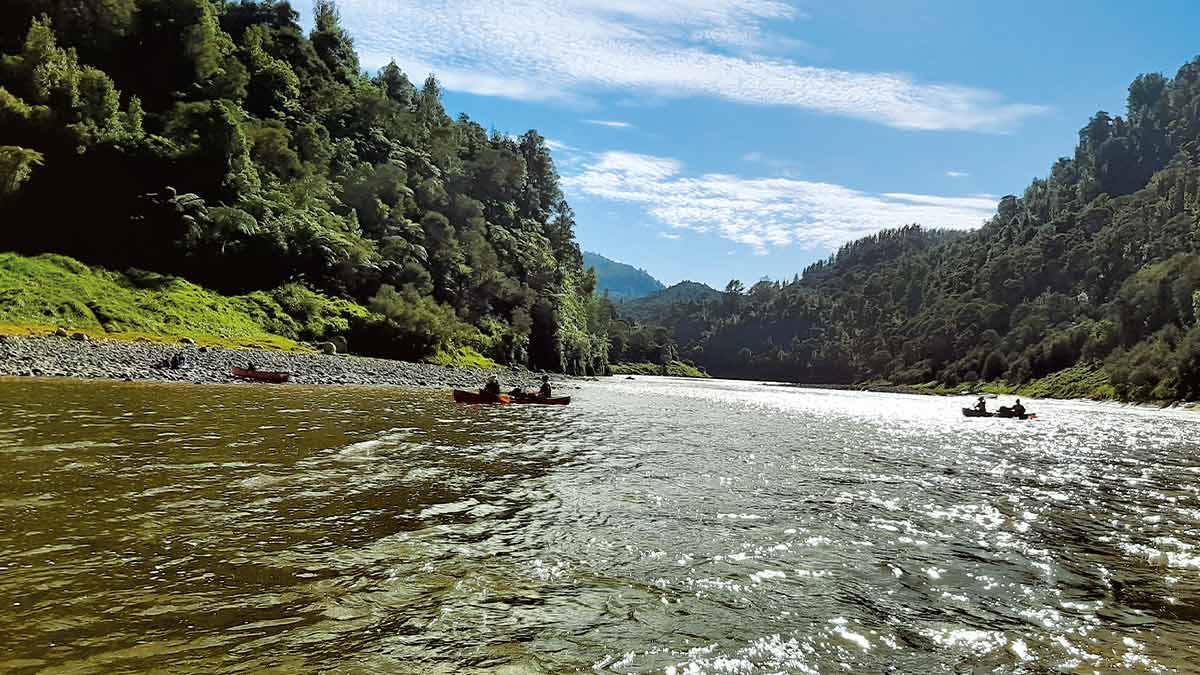Whanganui River is one of three rivers in New Zealand given its own legal identity. As the country’s third-longest river, it has played a vital role in the history and development of New Zealand and remains at the heart of the region. Interestingly despite being New Zealand’s longest navigable river, it has only two bridges between Whanganui and Taumarunui, but that doesn’t mean there’s any shortage of places to explore as Heather Whelan and her partner discovered.
As we travelled by jet boat along quiet bush-lined, fjord-like gorges on the upper reaches of the Whanganui River, it was hard to visualise the hustle and bustle of bygone days, when steamboats plied to and fro between Whanganui and Taumaranui.
From the 1890s, until railways and state highways were built, the river was a main thoroughfare for goods and passengers. In the centuries before that, Māori travelled by waka between mārae and kāinga. We passed some adventurers paddling in canoes and they seemed reminiscent of those times; it was as if the river had returned to the peacefulness of pre-European days.
From the mountains to the sea
Whanganui River is New Zealand’s third longest, stretching 290km from the northern slopes of Mount Tongariro to the river mouth at Whanganui. Its special significance was recognised in 2017 when an act was passed affording the river the same rights as a living person. The Māori proverb is often quoted: The river flows from the mountains to the sea. I am the river and the river is me. When visiting Whanganui recently, we experienced much of the river, its history, and its beauty.
A bridge to nowhere
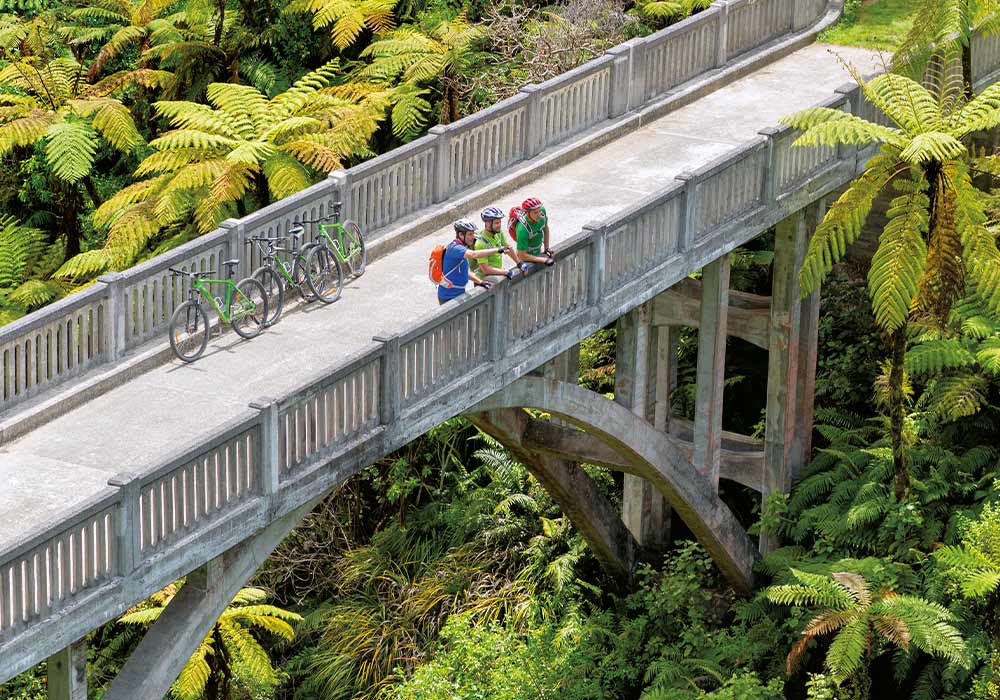
Our trip to the ‘world famous in New Zealand’ bridge began at Pipiriki, 65km up the Whanganui River Road from Whanganui. Here we joined our driver/guide Thomas and the small group of visitors who, like us, were curious to visit the unique spot. We’d booked with Whanganui River Adventures who provide jet boat journeys and canoe trips up the river from their campground base.
We donned life jackets and clambered aboard the boat. It’s 32km from Pipiriki to Mangapurua Landing, about an hour’s journey, punctuated by stops where we learned about points of interest, including places where the movie River Queen was filmed. Thomas is a local and has a wealth of knowledge, dating back to when he first started steering a boat on the river when he was a young boy. At the landing, we disembarked and took the gently undulating track to the Bridge to Nowhere, about a 50-minute walk.
Now in total isolation, the concrete bridge was constructed ready for a road that was never built. Soldiers returning from WWI were offered land in the Mangapurua and Kaiwhakauka valleys and they began to clear the bush. Despite difficulties, the community of 30 farms thrived for a while but by the time the bridge was finished in 1936, most farmers had already left. It became known as ‘the valley of abandoned dreams’ with the last few settlers reluctantly leaving in 1944. The farmland soon reverted to bush.
A paddle steamer excursion
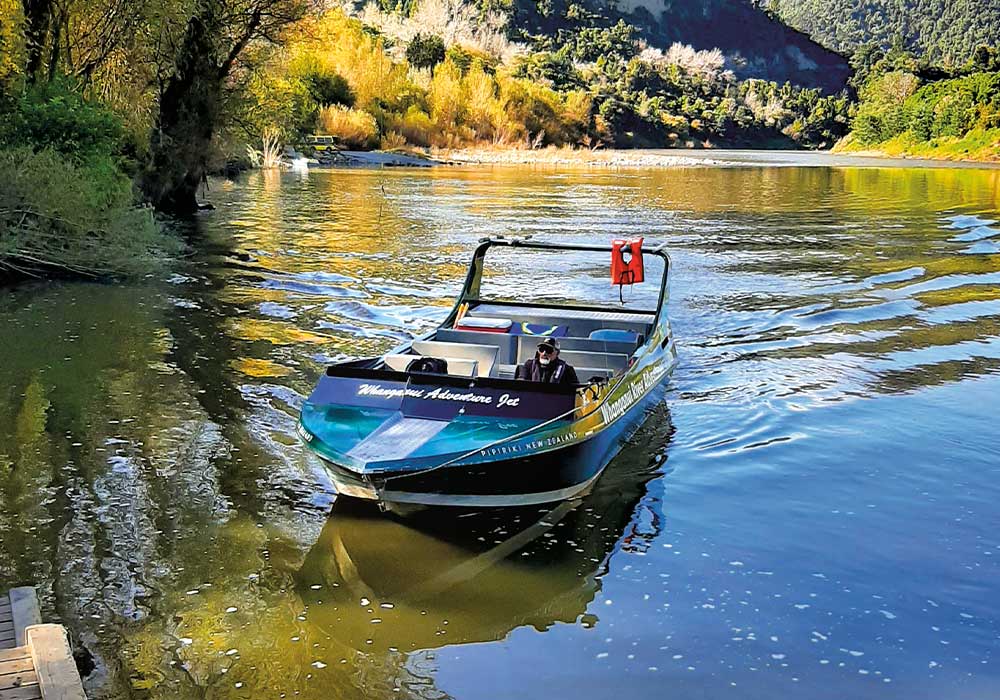
The first regular steamboat service on the Whanganui River began in 1892. Alexander Hatrick had several boats that took passengers to Taumarunui where they could connect by rail and coach for destinations further north. The river also became a tourist destination, known as the ‘Rhine of New Zealand’. The PS Waimarie, one of the original – and now New Zealand’s only remaining coal-fired paddle steamers – has been restored and now operates two-hour voyages from Moutoa Quay in Whanganui.
The whistle sounded, releasing puffs of steam as we boarded the vessel. The crew looked the part in their dark uniforms and sailor’s caps and were happy to explain the workings of the boiler and the paddle wheels. The slow pace as we chugged past parks and bridges, rowing clubs and rural scenery added to the Edwardian ambience. At Upokongaro, where the spire of St Mary’s Church could be seen beyond the riverbank and where cyclists waved from the new bridge, the Waimarie turned, and we cruised back to Whanganui.
Along the waterfront
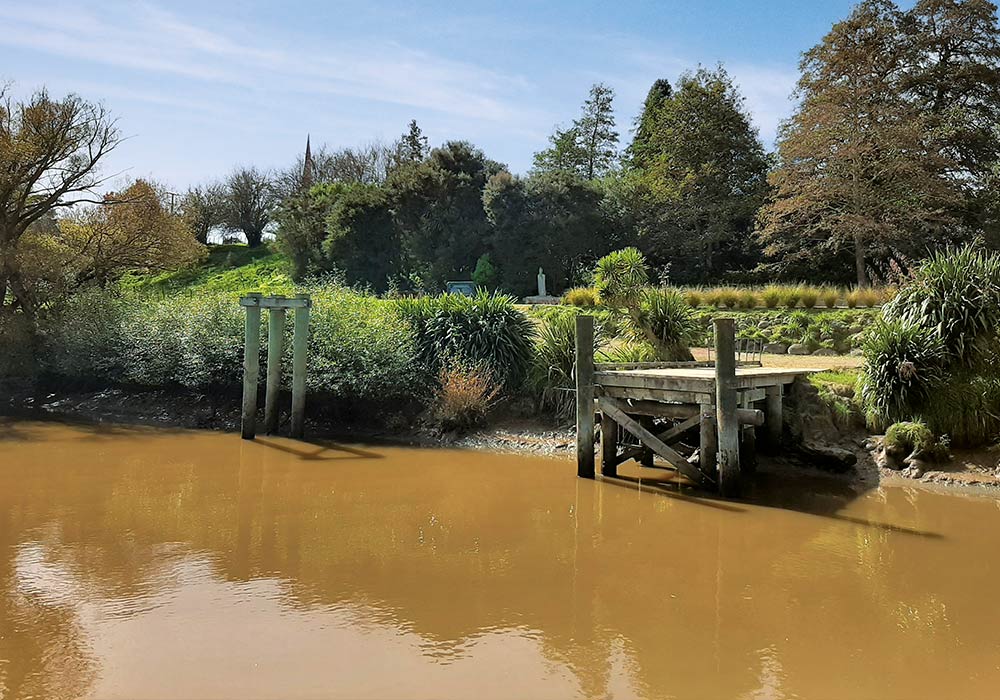
The Waimarie isn’t the only historic vessel moored at Whanganui’s riverbanks: nearby is the restored MV Wairua, also available for trips and cruises. And it’s not just watercraft that have been restored. Nearby we found Mable, a tram that used to run between the city centre and the seaside suburb of Castlecliff. Restored and refurbished, gleaming and polished, Mable was waiting at the quayside when we disembarked from the paddle steamer. Lovingly cared for by volunteers and running on Sundays for short trips, stepping aboard Mable is like stepping back in time. There are old adverts on the walls, polished leather straps to hang onto and, in the driver’s cabin, copper pipes, dials, and handles gleam like a steampunk’s dream.
There’s an impressive network of cycle and walking tracks in Whanganui, and the waterfront is busy with people riding bikes and scooters as well as strolling along the boardwalks and grassy areas. There are sculptures to admire and cafes to enjoy a coffee. On Saturdays, there’s food and crafts for sale at the Whanganui River Markets on Taupo Quay.
On the River Road
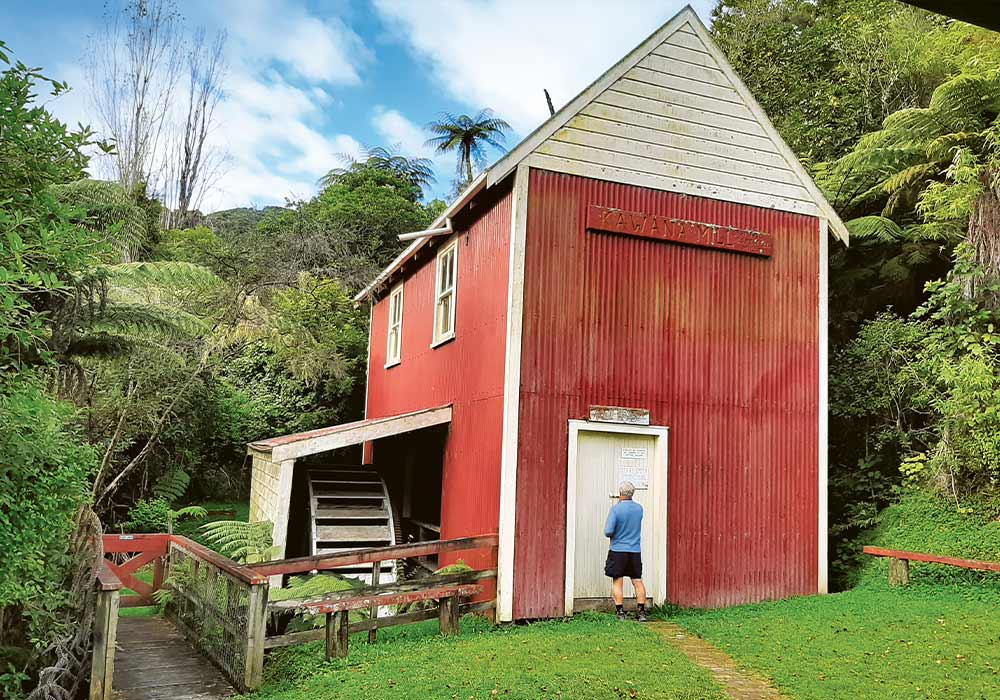
We explored the section of the river between Upokongaro and Pipiriki by car. The Whanganui River Road is off the beaten track and quiet enough to be used as a cycle route. There are small settlements and mārae close to the river and the road winds between them. Their names are evocative: Ātene (Athens), Koriniti (Corinth), Rānana (London), and Hiruhārama (Jerusalem) – villages renamed by missionary Richard Taylor in the 1850s.
Jerusalem is interesting because of the Catholic Mission founded in 1892 by Suzanne Aubert (Mother Mary Joseph). The convent and church can be visited, and we stopped to look around. St Joseph’s is more than a century old and features Māori carving and kowhaiwhai panels. There’s an interesting painting of a Māori Madonna and child on the wall. The settlement is also well known as the place where the poet James K. Baxter lived, had his commune, and is buried.
Kawana Flour Mill, further down the road, was built in 1854. It’s the last remaining mill on the Whanganui River and the only example of 1850s mill machinery in the country. It’s been rebuilt and restored, as has the miller’s cottage next door.

